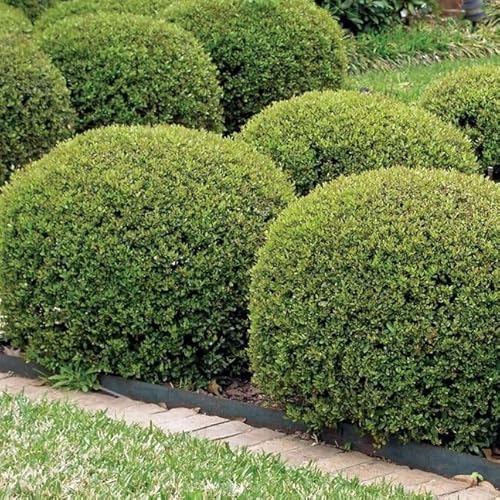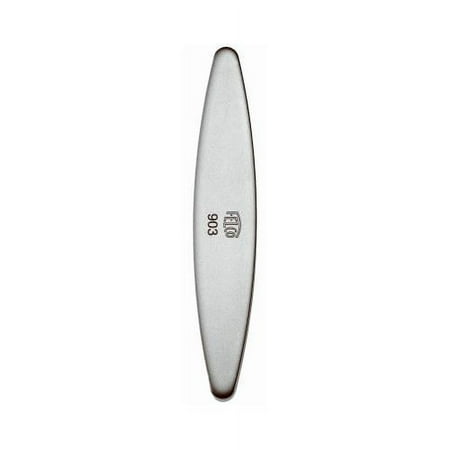What is a blobbery? Transform your garden with evergreen domes and curves – plus expert recommendations on the best topiary plants to use
Organic topiary shapes can elevate any space, regardless of the size
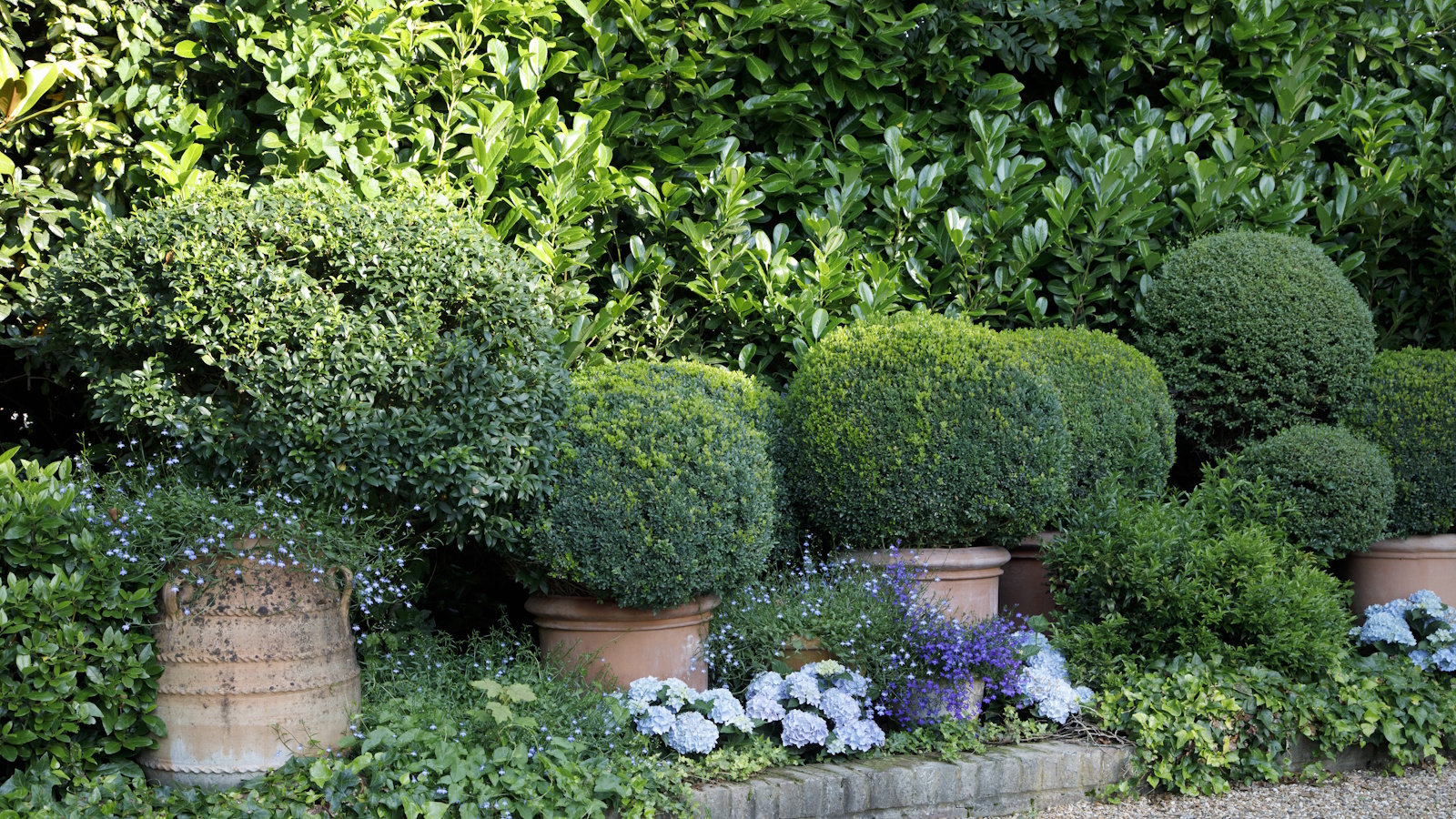

During my time working as a professional gardener, I have trimmed and shaped more shrubs and trees than I care to count. From towering copper beech domes to neatly clipped lollipop yews, I have always been a fan of the way topiary can elevate a garden. Blobberies might sound odd, and yes, the name is a little unusual, but these groups and clusters of trimmed, rounded evergreens are a classic go-to feature for many world-famous designers, and it is easy to see why.
Blobberies are about taking classic topiary and giving it a more playful, organic twist. Instead of flat hedges or rigid cones in isolation, think rolling green mounds, like moss-covered boulders lifted from a woodland landscape, but in bigger form.
Designers that I have worked for, including Arne Maynard and Luciano Giubbilei, use this blobbery planting to blur the lines between structure and softness. And, when paired with a wildflower meadow or dense perennials, it is hard not to be a fan of the blobbery. And, the best part? It can be done in small yards, too. Here’s everything you need to know, from the right plants to choose to topiary maintenance tips.
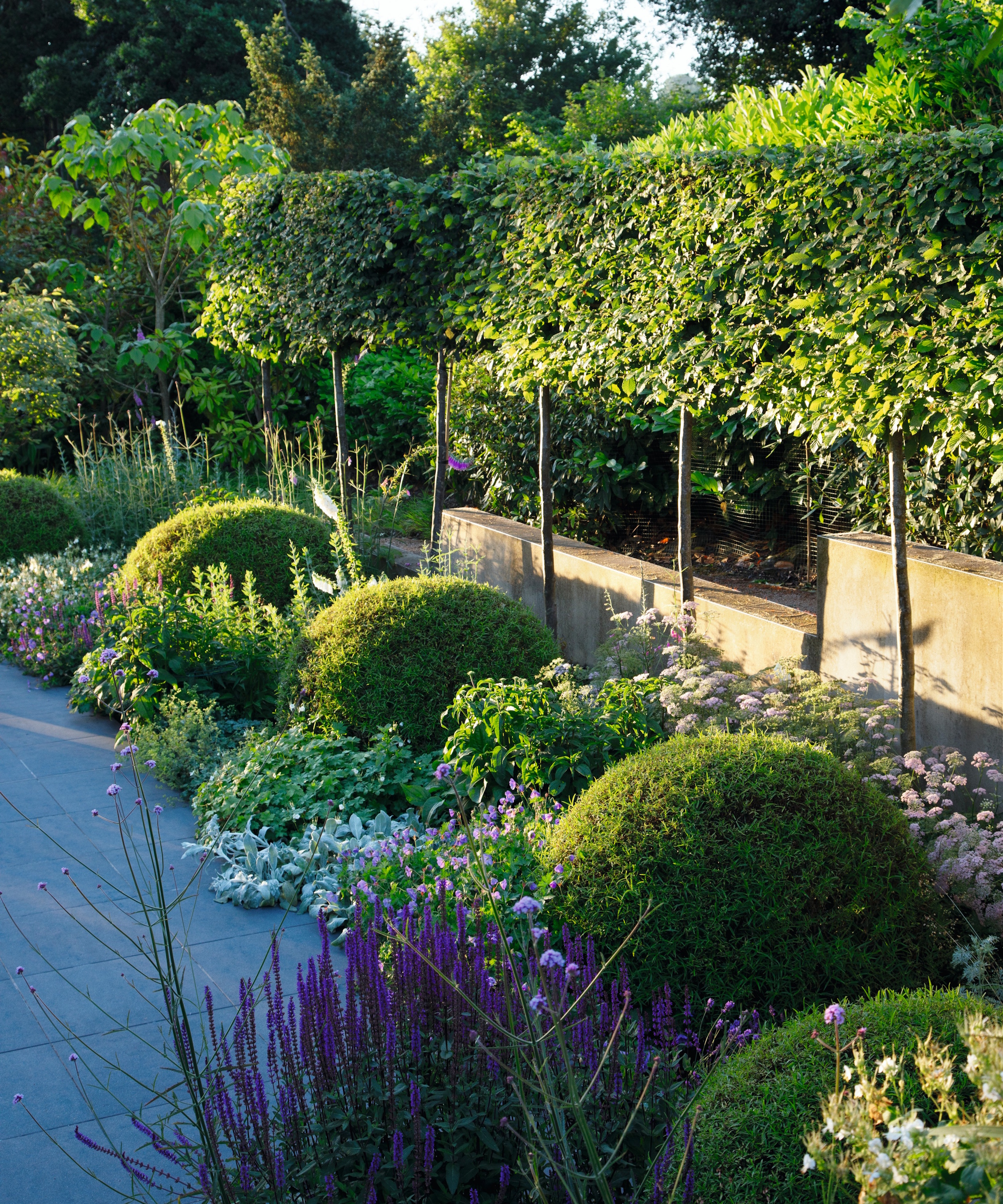
What is a blobbery?
The good news is that wherever you live and whatever your US hardiness zone, you can start a blobbery. The rules when landscaping with evergreens are simple but important to understand. In short, these are long-term investments, so be sure of the species, type, shape and look, as these are not the sort of plants you will be replacing every year.
How to start a blobbery

A blobbery is a playful twist on traditional topiary garden ideas. Rather than a few neat cones or geometric hedges, it’s a collection of clipped, cloud-like shapes, often rounded, irregular and arranged organically.
To start, you'll want to plant your shrubs in dense groups. Of course, you can build up your topiary collection over several years, investing in one larger dome this year, and adding a few smaller balls and mounds at a later date.
You’ll often see blobberies used as a rethink of formal garden design, sculptural yet it remains relaxed, as you can see in the images here. I think it’s the contrast between the control of the shape and the softness of the outline that makes it work so well.
Design expertise in your inbox – from inspiring decorating ideas and beautiful celebrity homes to practical gardening advice and shopping round-ups.
You can plant a blobbery just about anywhere: a large border, in a pot display, a green front yard, or on a balcony.
Just remember, many of the best evergreen shrubs used in topiary are slow-growing, and larger specimens can be expensive. So, choose wisely from the outset.
Best plants for a blobbery
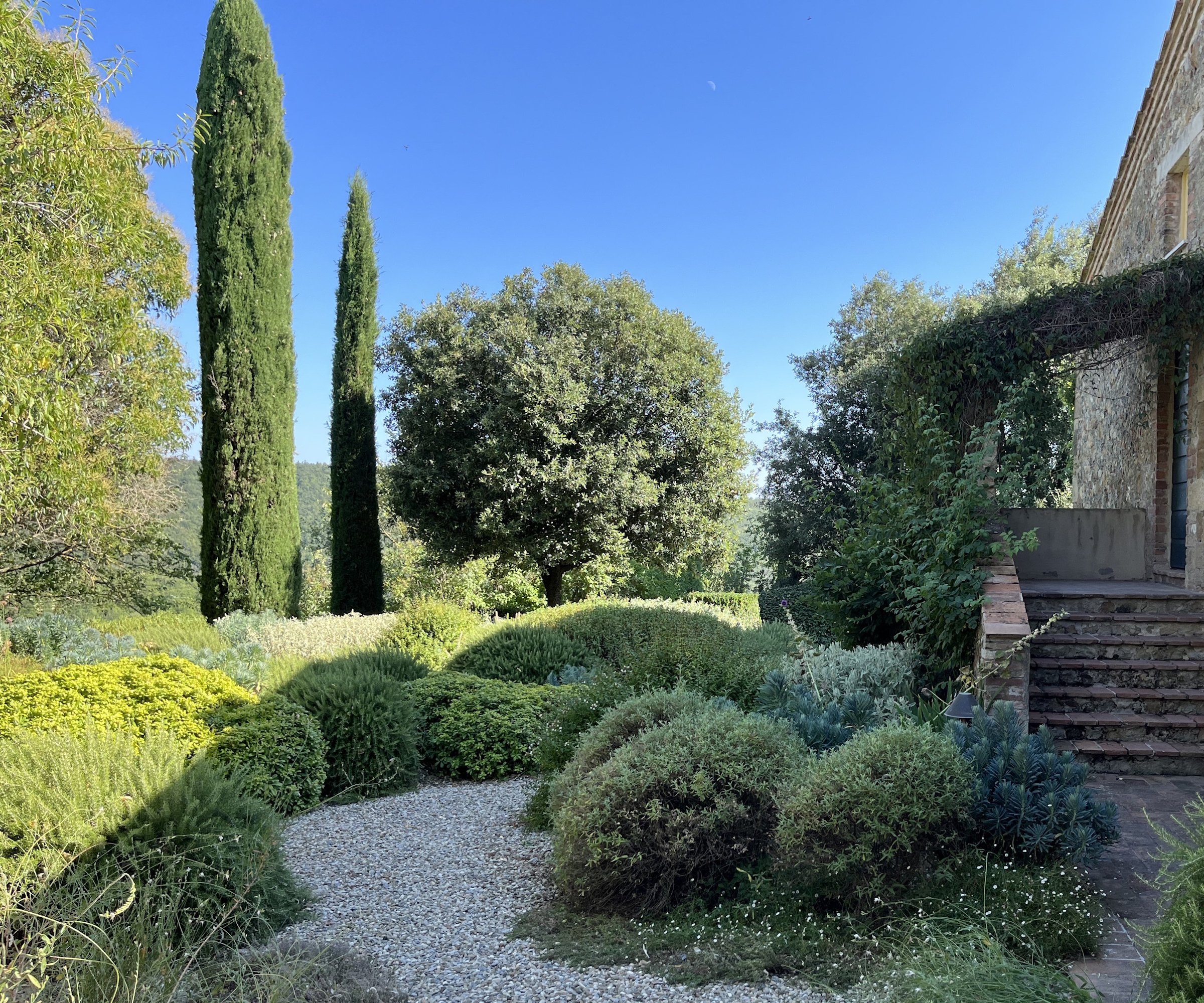
For a blobbery, you are looking for species that are evergreen, although one or two deciduous species dotted through can add seasonal flair. You want to be sure that your selections are considered some of the best plants for topiary, in that they do not mind regular shaping and clipping.
Box, or Buxus sempervirens, is the go-to for many gardeners. It’s incredibly dense, holds shape well, and can be trained into almost any form.
Box is widely available from nurseries, such as this attractive Buxus sempervirens 'Rotundifolia', with live plants available to order from Nature Hills.
However, the fungal disease, box blight, is a common problem, so if you want to avoid regular spraying and maintenance, I would suggest some more resilient alternatives.
Yew, or Taxus, is a real favourite of mine. It’s hardy, responds well to pruning, and its deep green colour gives blobbery shapes visual weight. I’ve used yew in so many different gardens where I have worked, and whether you want small domes, giant hedges or organic waves, yew is a good option.
There are many different types of yew, including this densiformis yew variety, Taxus x media 'Densiformis', available in rounded form from Nature Hills.
You can also think outside of the box in terms of species and color. I took the photograph above when working for a private estate in southern Tuscany, and, as you can see, plants with silver foliage can also be used to great effect.
For example, there are many types of phlomis, sage, or cistus varieties that can help to create a blobbery effect. And, with these three suggestions, you can bank on fragrance and flowers during spring and summer.
Finally, for an option with unique foliage, I would suggest one of two Pittosporum varieties, such as ‘Tom Thumb’ or ‘Golf Ball’, which offer a looser, slightly more contemporary take. They’re great for smaller yards or container gardens, too.
Live Pittosporum Tobira specimens can be ordered via Amazon and can help to create attractive, gentle domes in a blobbery.
How to maintain a blobbery
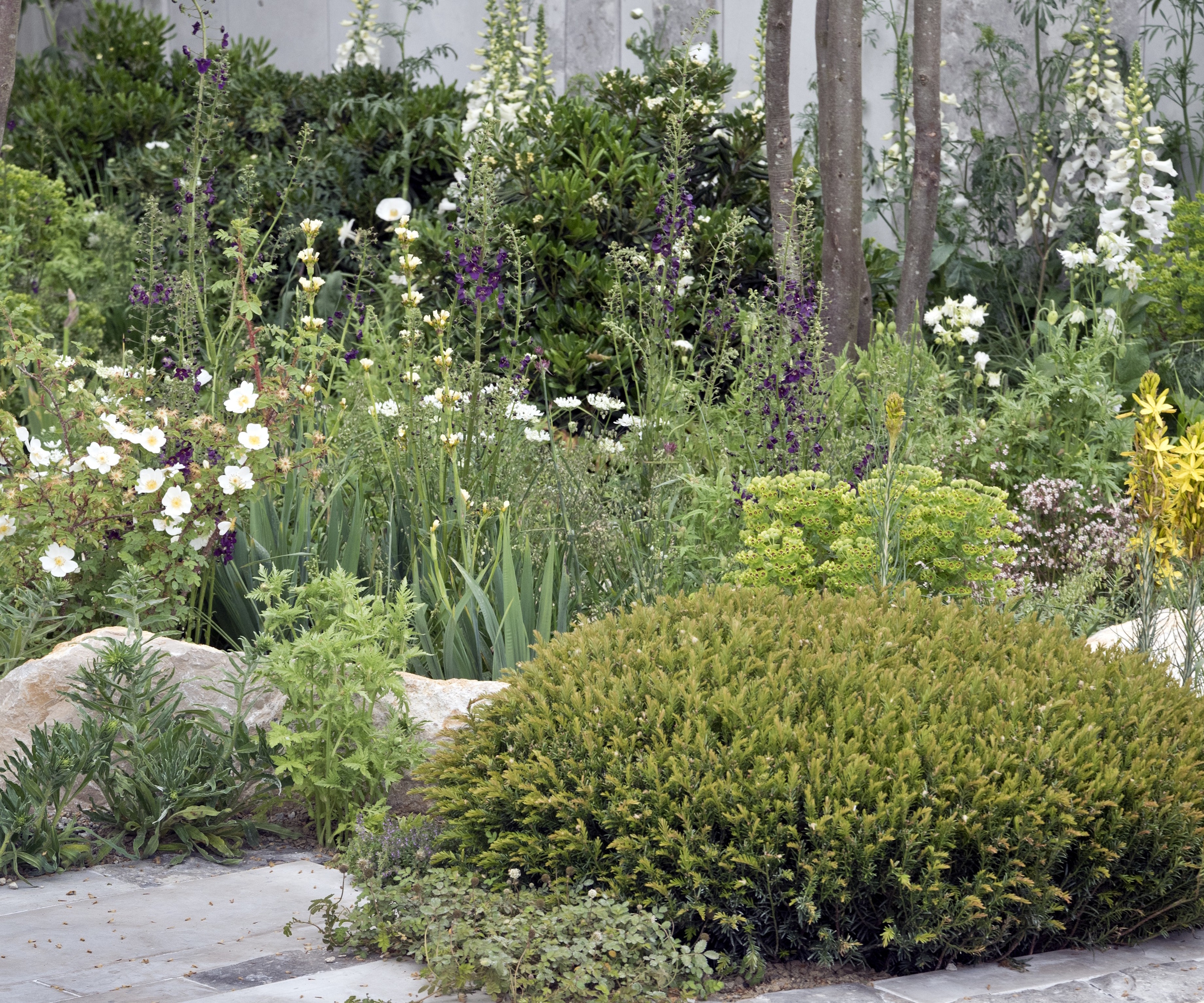
Sadly for us, topiary requires a serious amount of upkeep, and regular pruning is essential. A few months without care can leave your blobbery more messy than shapely.
In terms of when is the best time to cut topiary, this will vary from species to species, although late spring to early summer, around May or June, is usually a sensible window to aim for, once the spring flush has hardened off.
If you want to keep your blobbery in fine form, I would also suggest a late-season second trim in August or early September to help maintain the shape through winter.
When shaping, remember that you are aiming for a rolling, undulating effect, like a series of hills in miniature. It can help to step back regularly and view the whole group together.
It is better to use hand tools for precision, as opposed to electric or petrol motorized trimmers. For the best results, keep your tools sharp and regularly clean them when you are working. Having a bucket of water to dunk your clippers in and remove foliage and sap can help.
Many Japanese gardening tools are perfect for topiary trimming, such as these Okatsune short-handled loppers, available via Amazon. These precision-cutting pruners are ideal for shaping work in the yard and are very highly rated by reviewers.
Above all, blobberies are meant to feel natural and a little playful. Don’t stress if they’re not identical; that slight variation adds charm and character.
FAQs
What’s the best topiary to grow in pots?
If you want to grow topiary in pots, look for compact, slow-growing species that respond well to pruning and won’t outgrow their container too quickly. I would recommend Japanese holly, or Ilex crenata, which gives a contemporary edge with its small foliage. During summer, be sure to water and feed regularly, as pots can dry out very quickly.
Remember that when planting any shrubs, deep watering is encouraged to give your plants the best start. And, it can be a good idea to fertilize evergreens in spring to boost growth in the early part of the growing season. Be sure to use a feed specifically for evergreen and foliage plants.
Shop topiary accessories

Thomas is a Content Editor within the Gardens Team at Homes and Gardens. He has worked as a professional gardener for both public spaces and private estates, specializing in productive gardening, growing food and flowers. Trained in Horticulture at the Garden Museum, he has written on gardening and garden history for various publications, including The English Garden, Gardens Illustrated, Hortus, The London Gardener and Bloom. He has co-authored a Lonely Planet travel book, The Tree Atlas, due out in 2024.
You must confirm your public display name before commenting
Please logout and then login again, you will then be prompted to enter your display name.

